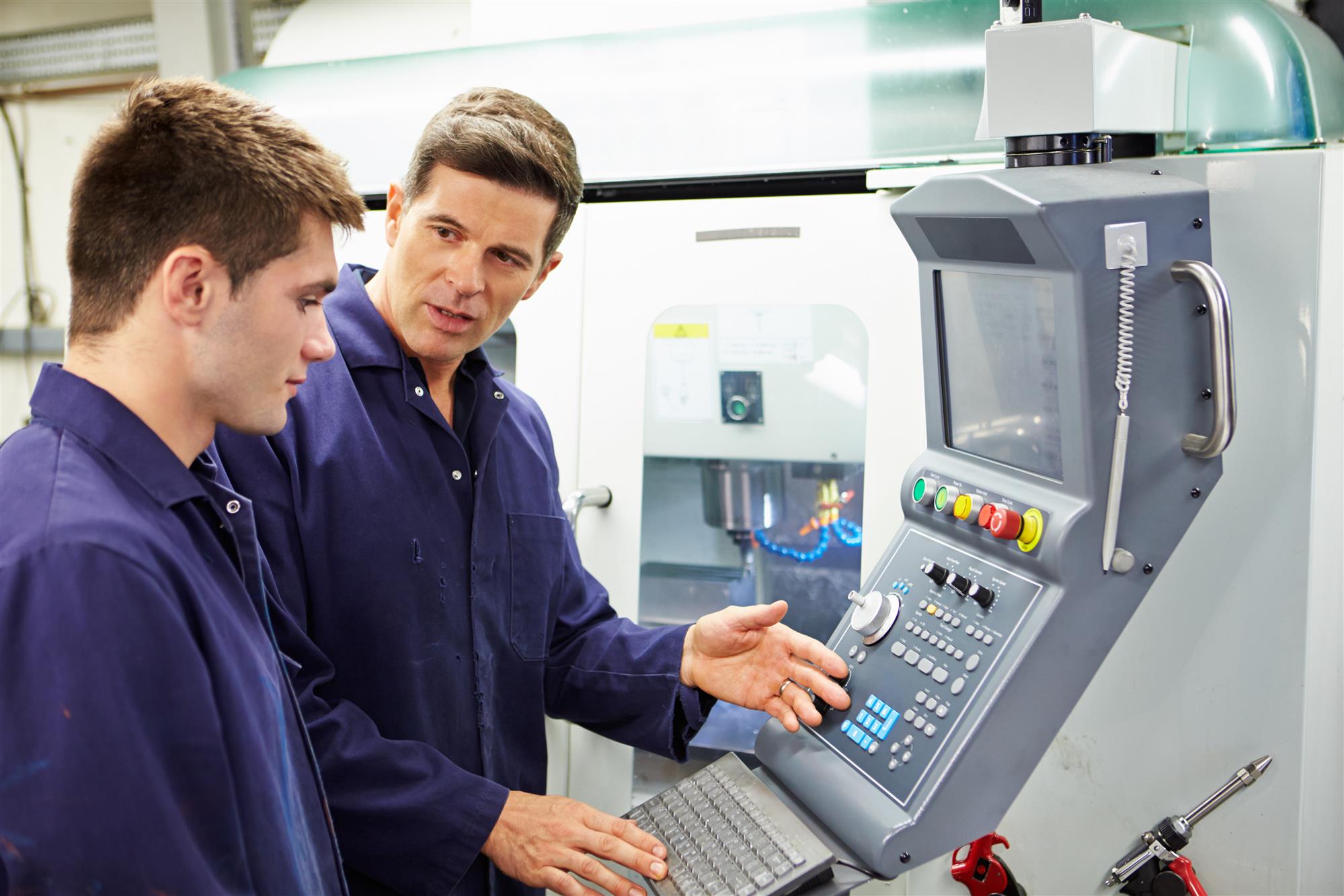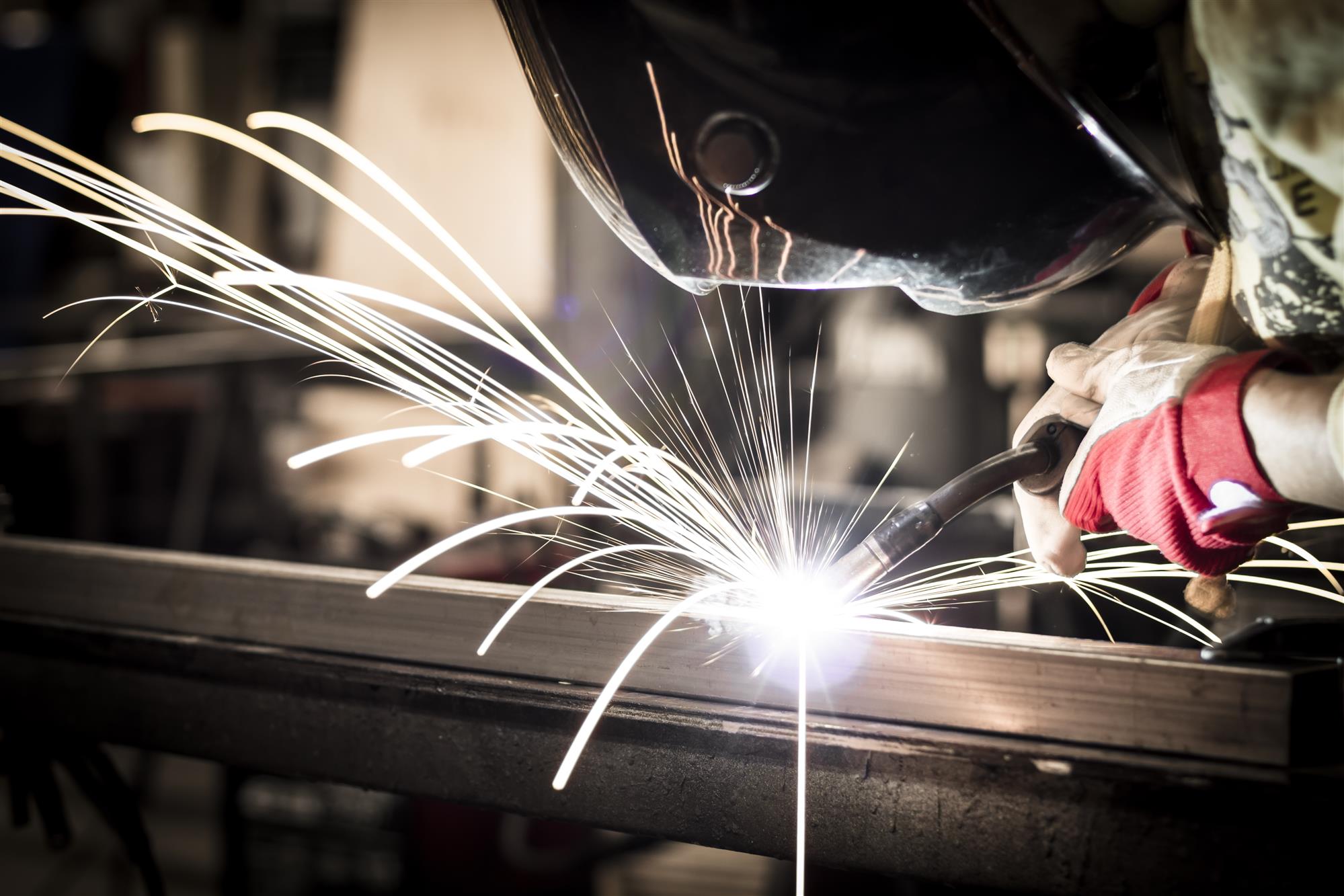What Is CNC Machining as Related to the Manufacturing Industry?
CNC (Computer Numerical Control) machining is a manufacturing process where a solid piece of material is transformed into the finished product. This process is often referred to as subtractive manufacturing because the raw material is cut away at until the desired results are achieved.
Prior to the invention of modern computers, CNC machines had to be programmed using punch cards or punch tapes, where punches corresponded to specific machine functions. The processes were semi-automated and required CNC machine operators to switch out different types of tools in between each tape or card.
Today, CNC machinery can be fully automated to the point where machines can be left to produce output with minimal human interactions. In some machine shops, you will even find the one machine operator managing multiple CNC machines simultaneously.
To create the finished products requires modeling them first using CAD (Computer Aided Design) or CAM (Computer Aided Manufacturing) software. The software apps allow the product to be constructed in a virtual 3D environment to ensure it meets the required specifications.
Then, once the final revision is saved, the data file can be uploaded to the computer in the CNC machine. The CNC machine uses the encoded data in the file to produce the finished product. Different types of CNC machines are used, depending on the product being manufactured.
For instance, a CNC lathe machine transforms raw materials by spinning the material against a drill-like bit to remove the material. On the other hand, a CNC drill machine uses drill bits to drill directly into the raw material and remove material.
While both of these machines can perform specific processes, CNC milling machines offer greater flexibility. They utilize special rotary attachments to cut away the material. Some models can combine lathe and drilling processes as well, which can eliminate the need for multiple CNC machines.
Aside from these types of CNC machines, there are also specialty machines, such as CNC laser cutting machines or high-powered water jets, to function as the cutting mechanisms to remove the desired amount of material to produce the finished good.
A CNC Machine Is Only as Good as Its Programming
Since most CNC machines lack artificial intelligence (AI), they must rely solely upon their programming. If the data in the program is off just the slightest, it can result in faulty finished goods. This is why CNC operators must know how to use CAD and CAM software apps, as well as enter in programming instructions manually to the CNC machine when a data file is not available.
Skilled CNC operators also know they should always run a test prior to starting a batch process to ensure the machine is within acceptable operating parameters and there are no errors or issues that need to be resolved. Catching mistakes sooner, rather than later, always costs less.
For more information about CNC machines for your machine or metal fabrication shop, please feel free to contact Quantum Machinery Group at (909) 476-8007 today!
U.S. Manufacturing Expands at Fastest Rate in 3 Years!
Data from the Institute of Supply Management (ISM) indicate improving economic conditions are benefiting U.S. manufacturers. By July 2017, the ISM Purchasing Managers Index (PMI) rose to 57.8%.1 This was up from 54.9% in June and the highest since mid-2014. The numbers are significant because they provide a measure of how likely manufacturers are to buy products such as metalworking machinery, equipment, and software.
Significance of the Current Findings
There are 18 industries tracked by ISM. Of those, 15 reported growth in June. The readings are significant because those over 50% show that business and the manufacturing sector are expanding. Numbers below that benchmark indicate contraction.
Nonetheless, the pace has not slowed down. The PMI stood at 58.7% in October 2017,2 higher than June but slightly lower than September’s 60.8 reading. The ISM reported continued growth in new orders, production, employment, and order backlogs. In the October manufacturing report, the institute’s feedback from a panel indicates expanding business conditions, including growth in production, new orders, and export orders.
A slowing of supplier deliveries indicates an improvement, as does a contraction of inventories. In October, 16 manufacturing industries reported growth, including:
- Paper Products
- Nonmetallic Mineral Products
- Machinery
- Transportation Equipment
- Wood Products
- Food, Beverage & Tobacco Products
- Miscellaneous Manufacturing
- Petroleum & Coal Products
- Plastics & Rubber Products
- Textile Mills
- Chemical Products
- Computer & Electronic Products
- Fabricated Metal Products
- Furniture & Related Products
- Electrical Equipment
- Appliances & Components
- Primary Metals
Importance of the ISM Index
The index is essentially a survey of purchasing and supply executives. They are surveyed because the rate at which they order raw materials and supplies from manufacturing companies tends to reflect broader economic conditions. For example, the purchase of metal-bending equipment may rise as the economy improves and fall if there may be an impending recession.
Reports are issued monthly, providing a look at the most current business activity.
Markit Reports a Similar Trend
In June, Markit, a financial data firm, reported an increase to 57.3 of its U.S. Manufacturing Purchase Managers Index. Like the ISM index, a reading above 50 indicates economic expansion. The index, output subindex, and read on new orders were all at their highest levels since April 2010, meaning that business for U.S. goods producers was growing a faster rate than it has in a while.3
Factory output, order books, employment, and payroll numbers were rising fast as well, in some cases the most since the recession, according to Markit’s Chief Economist Chris Williamson.
What It Means for Business
For machinery providers and software companies/SaaS service providers, the latest economic improvement means an increase in business opportunities. Companies are investing in software and metalworking, cutting, bending, welding, and other machines.
If the demand for products is increasing your need for high-quality, versatile equipment, contact Quantum Machinery Group online, email sales@quantummachinery.com, or call our service department at 909-476-8007.
Sources
- https://www.marketwatch.com/story/us-manufacturers-growing-at-fastest-pace-in-three-years-ism-finds-2017-07-03
- https://www.instituteforsupplymanagement.org/ismreport/mfgrob.cfm?SSO=1
- http://www.reuters.com/article/us-usa-economy-markit-manufacturing/u-s-manufacturing-expands-in-june-at-fastest-rate-in-over-four-years-markit-idUSKBN0F64DO20140701
Why Manufacturing Is Thriving in the USA
Want to know why manufacturing is thriving in the United States? Read this informative blog post today from Quantum Machinery Group to find out further details.
The year of 2009 saw a resurgence of growth in the manufacturing industry after decades of decline. The industry is revitalizing itself, but not all manufacturer fields saw an equal amount of growth. Sectors that create or rely on metal bending and metalworking machinery are thriving more than others. Construction and other heavy industries are still relevant, but the biggest growth is in the automotive industry and various high-tech fields.
Vehicles Are Still Popular
The automotive industry is perhaps the greatest beneficiary of this growth. Many were worried about the concept of “peak cars” years ago. This fear was due to the perception that Americans owned too many vehicles. Industries believed the populace had reached a saturation level where it was no longer profitable to mass produce cars as they had been before. Americans are, in fact, approaching this level, but we’re not there yet. There are also other factors at work to keep America invested in car ownership.
The reduction and stability of oil prices in recent years spurred investment into the vehicle industry. Population density is less concentrated in urban areas, too, and is spreading outwards into the suburbs and rural areas. These outward expansion trends increase travel time between points of interests and make owning a car almost mandatory. The continued demand for transportation and low prices of oil give value to purchasing a newer vehicle.
Massive Growth in the Midwest
Indiana, Illinois, and Michigan’s automotive producers are growing their workforce sizes and plummeting the local unemployment rate at the same time. Growth rates over the last decade range anywhere from 25 percent to 37 percent.
Detroit holds the record for the largest growth in sheer numbers. Its automotive workforce grew just shy of 31 percent, which is about the median of all growth rates, but it’s the sheer number of people that makes this figure impressive. The Louisville area in Kentucky, which saw the highest growth rate at 37 percent, is home to roughly 60,000 jobs. Detroit now has 240,000 from a prior 149,000.
Technology Is the Future
Silicon Valley is currently experiencing a small boom despite the high cost of living and the burst of the dot-com bubble. Traditional computer processors have a theoretical limit to the power they can provide; we’re quickly reaching that limit now. The solution to this problem directs the focus of research and development to computer companies. The challenges these companies face, concerning packing more processing power into smaller spaces, require innovative solutions.
Current research that attempts to overcome obstacles comes from cutting-edge developments in theoretical physics. Companies are hiring young and bright minds to solve these problems and many others that arise from dealing with the digital world. Technological developments from this research will play a significant role in the evolution of computers and the “internet of things.”
Aerospace and innovative companies, like Tesla, are also seeing plenty of growth with the manufacturing revival. The bulk of the growth remains in the automotive industry and others that rely on technology to manipulate metal. Quantum Machinery Group specializes in metalworking machinery that enables manufacturing industries to thrive and prosper.
Commonly Used Industrial Metals and Their Properties
Discover what metals are the most commonly used in the metalworking and manufacturing industries, along with their properties, in this post by Quantum Machinery Group.
Nine Inch Nails is the first thing that pops into the minds of non-industry people when they think of industrial metal. While that band is an example of industrial metal music, it’s not the stuff that makes up buildings, appliances, and nearly everything else on which we depend.
Almost everyone knows they want a stainless-steel cooking pot, but they most likely don’t know what materials their refrigerators consist of, and that’s unfortunate. The science behind industrial metals is very interesting, especially if you’re in the industry already.
Here, we’ll discuss some of the most common metals used by metalworking machinery today.
Aluminum
Aluminum is a popular metal that’s also known for its light weight. It is highly resistant to corrosion and weathering, making it ideal for indoor and outdoor applications. Aluminum also boasts conductivity and is ductile enough to hammer into sheets and shape into wires.
Aluminum can be used in many ways. Weather-resistance makes it suitable for windows, doors, and other externally facing building components. Outdoor signs and street lights consist mostly of aluminum for the same reason. This metal is also a favorite in automobile parts and bicycles due to its light weight.
Copper
Copper isn’t as glamorous as other metals, but it does remain useful nonetheless. It is highly ductile and malleable, which makes it easy to shape into many different useful forms. Copper is also incredibly easy to solder, and, when used in electronics or plumbing, can create strong bonds and junctions. The orange-tinged metal is resistant to corrosion, especially from water and soil, and features overall flexibility that allows it to handle changes in temperature better than most metals.
Copper comes in soft and rigid variants, depending on its use. Soft copper tubing is present in HVAC systems, refrigeration lines, and heat pumps. Rigid copper is present in water pipes for hot and cold tap water. It’s also the main material found within plumbing pipes, tubes, and household wiring because it’s relatively cheap in comparison to most metals.
Carbon Steel
This variation of steel sees most of its use in heavy-duty applications. Carbon steel gets its name from the fact that it contains very high levels of carbon; this is what gives the metal its strength, durability, and weight. It is tougher and more durable than most other standard metals, giving it great strength, but isn’t as ductile, and, thus, doesn’t always suit small projects.
Carbon steel is the primary material used in massive immobile structures due to its heavy weight. Most applications for this metal exist. It’s what makes up the framework of highways, bridges, and tall or broad buildings, and is an ideal material for support beams and structural framework pieces. Most trailer beds for semis are also made of carbon steel.
Stainless Steel
One of the most common metals is stainless steel. This often-shiny silver metal contains a mixture of steel and at least 10 percent chromium and other alloys. The ratios and types of alloys used depend on the intended function of the object.
Protecting Yourself from Flying Metal Particles
Quantum Machinery Group presents safety tips and precautions you should take when working with different metals to protect yourself and reduce risks of injuries.
Working with metalworking machinery requires taking certain precautions to protect yourself from flying metal particles. Specific areas of the body should be protected including the hands, arms, face, and eyes, as well as other areas of the body. Before discussing various bodily risks, your work wear is just as important as personal protection equipment (PPE).
You should never wear loose-fitting clothes around machinery and equipment that could potentially get caught in moving parts and components and which would result in serious bodily injuries. This also includes employee identification lanyards and neck ties, as these items can swing freely and could accidentally get caught in the machine.
Metal particles of all sizes can contain sharp points and edges. When they become airborne, the amount of force can cause the particles to puncture into different parts of the body without the proper PPE.
Eye Protection
One of the most common types of workplace injuries that could occur without any protection is an injury to one or both eyes. Metal particles can puncture the outer eye as well as get trapped in between the eyelid, resulting in scratched and damaged retinas. Always make sure to wear the right type of safety glasses or goggles to protect your eyes.
Face and Head Protection
There are different types of face masks, hard hats, and other PPE which can reduce the risks associated with flying metal particles.
Hand Protection
When working close to moving parts and components, you want to ensure the hands are protected from metal particles. It is important to choose the right type of work gloves that provide the right protection based upon the type of work being performed. Some gloves are not recommended because they make operating the machinery and handling materials difficult.
Arm and Upper Body Protection
It is a good idea to wear long-sleeved shirts to protect the arms from accidentally cuts and scrapes from flying metal particles. Coveralls or shop coats would be suitable PPE alternatives to ensure the arms and upper body were sufficiently protected.
Lower Body and Legs
Thick jeans or industrial pants should provide protection from most types of flying metal particles. However, in environments where there is a large number of particles being created, coveralls should also be worn to provide an added layer of protection.
Feet
Let’s not overlook the feet because they also need protection, depending on the angle and direction the particles are being emitted from the machinery. Quite frequently, the particles are ejected downward toward the feet. Thick steel-toed work boots are recommended in many working environments as they provide the necessary protection.
Last, prior to starting work on any type of metalworking equipment or machinery, review the safety precautions and required PPE needed to operate the machine. Never, under any circumstances, enter a production or work area without the proper PPE.
For information on the latest metal fabrication and machine shop machinery and equipment, feel free to contact us, here at Quantum Machinery by calling (909) 476-8007 to speak with one of our sales engineers today!










